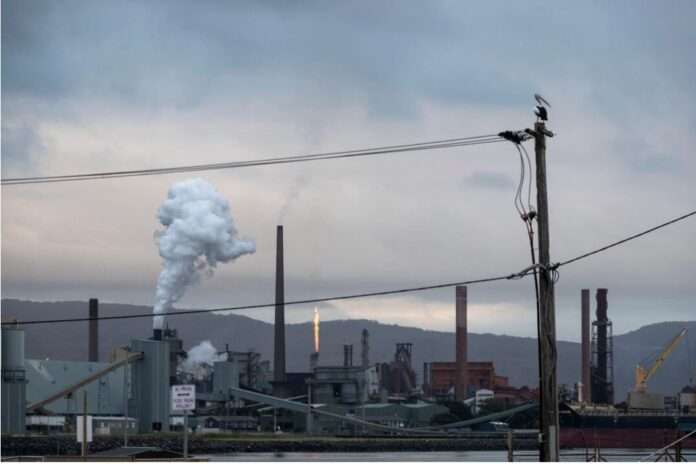Eesti Eest! Newspaper delivers curated news that cut through the censorship, mainstream bias, and institutional dominance that has left society divided and misinformed. The platform allows readers to access the news that matters, particularly when it is being ignored. Updated minute-by-minute with news coverage from a diversity of publications and topics. The website may display, include, or make available third-party content (including data, information, applications, and other products, services, and/or materials) or provide links to third-party websites or services, including through third-party advertising (“Third-Party Materials”). You acknowledge and agree that Eesti Eest! is not responsible for Third-Party Materials, including their accuracy, completeness, timeliness, validity, copyright compliance, legality, decency, quality, or any other aspect thereof. Eesti Eest does not assume and will not have any liability or responsibility to you or any other person or entity for any Third-Party Materials. Third-Party Materials and links thereto are provided solely as a convenience to you, and you access and use them entirely at your own risk and subject to such third parties’ terms and conditions. This Agreement is governed by and construed in accordance with the internal laws of the State of Delaware without giving effect to any choice or conflict of law provision or rule. Any legal suit, action, or proceeding arising out of or related to this Agreement shall be instituted exclusively in the federal courts of the United States or the courts of the State of Delaware. You waive any and all objections to the exercise of jurisdiction over you by such courts and to venue in such courts. The Content and Services are based in the state of Delaware in the United States and provided for access and use only by persons located in the United States. You acknowledge that you may not be able to access all or some of the Content and Services outside of the United States and that access thereto may not be legal by certain persons or in certain countries. If you access the Content and Services from outside the United States, you are responsible for compliance with local laws. All information on this site is intended for entertainment purposes only.
Contact us: [email protected]
Eesti Eest!








The Australian government has announced a “big funding boost” to help decarbonise the country’s heavy industries.
On April 24, the federal Labor government said it would spend $330 million (US$214 million) to help nine industry projects reduce their carbon emissions.
Specifically, the QAL Alumina refinery in Queensland will receive $90 million to upgrade its energy efficiency, while $52.9 million will go toward upgrading the klin and increasing alternative fuel usage at a century-old cement manufacturing facility in Tasmania.
In Western Australia, $35 million will be invested to transition Murrin Murrin cobalt and nickel operations to renewables, while $32.9 million will be dedicated to emission reduction at the CSBP chemical manufacturing facility in Kwinana.
Other significant investments include $50 million to reduce emissions intensity at the Adbri cement manufacturing in South Australia and $44 million to improve the energy efficiency of the Shoalhaven Starches food manufacturing facility in New South Wales.
The government estimated that these investments would slash around 830,000 tonnes of CO2 each year, equivalent to the emission of over 250,000 cars, and generate hundreds of new jobs during the construction phase.
Chris Bowen, the minister for Climate Change and Energy, said that this funding is vital for securing the future of Australia’s heavy industry amid the transition to net zero.
“Northern Tasmania, Central Queensland, and Western Australia have been industrial powerhouses for generations, and the Albanese Government is ensuring that continues.”
“As global markets change rapidly–we’re supporting Australian industry to not only survive but thrive with our world-class products that support regional jobs across the country.”
Meanwhile, Shadow Energy Minister Ted O’Brien recently raised concerns about Labor’s massive spending on renewable energy and net zero transition.
The shadow minister cited a study by a leading energy economist showing that over $60 billion of mega energy projects that Labor wanted to build by 2030 were unaccounted for in Labor’s “radical” energy plan.
“It’s high time that Labor came clean with the Australian people and explained the true cost of its radical energy experiment.”
“Australians are paying some of the highest energy bills in the world despite false promises from Labor that it would cut household power bills by $275.”
Australia to Mimic Biden’s Inflation Reduction Act
The Labor government’s move coincides with plans to emulate Biden’s Inflation Reduction Act to enhance “green energy” supply chains and local manufacturing.
In mid-April, Prime Minister Anthony Albanese announced that his government would create the Future Made in Australia Act, a comprehensive plan to boost investment, job creation, and economic growth while achieving net zero emissions, in 2024.
The Act was expected to include taxpayer-backed incentives to subsidise advanced manufacturing and clean energy industries in the country.
Although details of the Act are yet to be disclosed, the prime minister cited similar moves from other advanced economies such as the United States, the European Union, Japan, and South Korea.
However, some top Australian economists warned against blindly mimicking Mr. Biden’s approach.
Instead, most economists believed it would be more effective for the government to provide grants to all kinds of innovative firms.
They want the government to spend more on research and development across the entire economy, like joint ventures between businesses and universities, and through institutions such as the Commonwealth Scientific and Industrial Research Organisation (CSIRO).
They argue that such investments are crucial for reigniting productivity growth, which has stagnated in recent decades.